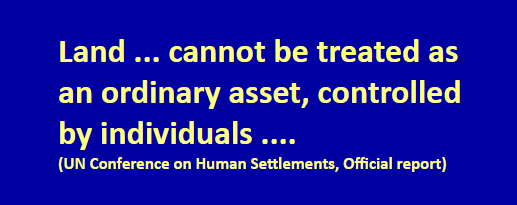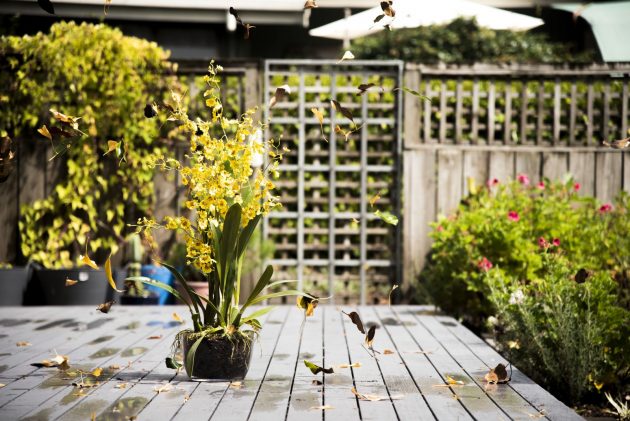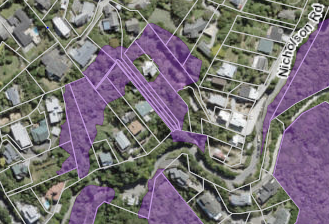Barbara McKenzie
stovouno.org
NZ has a tradition of encouraging home ownership, seen as a buffer against poverty and providing security and a high quality of life for families.
‘’When you dispossess people of their land, regardless of the colour of their skin, it drops those people into poverty’
West Coast Iwi

Core values, our democracy and our sovereignty are now under threat as New Zealand politicians prefer to apply an ideology sponsored by the United Nations bureaucracy and associated interest groups rather than to be guided by the wishes, needs and values of New Zealanders.
There is a concerted move in New Zealand to:
- Undermine private land ownership
- Encourage or enforce high-density living
- Prioritise ‘rewilding’ over human welfare
- Change our way of life for the worse
Almost 30% of sparsely-populated New Zealand is reserve Crown land. This does not include the Te Urewera forest, formerly the North Island’s largest national park, or the many reserves managed by local authorities. A third of New Zealand is covered in forest, most of this native bush. In addition, there are scraps of bush on suburban sections, and large stands on farms, with more and more farmers planting to combat erosion. Over 40% of land is in pasture. Home gardens are parks in themselves providing food and living space for birds, bugs and human beings – native fauna appreciate New Zealand gardens with their flowers and trees.
There is no indication that the majority of New Zealanders want a dramatic increase in reserve land at the expense of private property, or a change to policies on compulsory acquisition, which so far has been used only to enable major public works.
Government and local authorities are launching a full-frontal attack on long-established policy, private property rights and the New Zealand way of life.
- Local authorities have instituted a policy of claiming rights over private property in the interest of biodiversity (Significant Natural Areas or SNAs). Regional councils are falsely claiming authority from the RMA, and the policy is informed by sources which are not revealed.
- The government has now introduced measures to legitimise SNAs and further facilitate control or acquisition of private land in the name of biodiversity, in the form of the proposed National Policy Statement on Indigenous Biodiversity and the proposed Biodiversity Strategy.
- The Urban Development Bill gives local authorities sweeping powers to enforce the acquisition of private urban land on behalf of developers.
- The government has signed the UN Compact for Safe, Orderly and Regular Migration whose manifest purpose is to facilitate unchecked migration. Mass immigration will justify high density urbanisation and the egregious provisions of the Urban Development Bill, and is likely to undermine the culture of home ownership.
- The new measures introduced by government repeatedly flag a greater say by iwi on (non-Maori) private property, though without details.
- Authorities are flagging zoning decisions to be made on ludicrous claims of dramatic sea rise.
New Zealand authorities, at both local and government level, are putting in place a series of measures that constitute a concerted attack on private property, and which taken together will ensure that nobody can feel secure in their own home.
There is an ideological commitment to restore as much of New Zealand as possible to its assumed original state, and to push human beings into as small a space as possible. A number of serious philosophical issues arise with regard to these intentions:
- Biodiversity is considered to trump human rights and human happiness, always.
- Respect for the intrinsic value of private property is being undermined.
- There has been no proper discussion about whether New Zealanders are on board with a dramatic reallocation of land use, or whether instead they support former policies of ongoing environmental improvements.
- The public are being misled about both the legal framework for what is being done, and also the ultimate goals.
- The contribution to biodiversity of private property in the form of home gardens and farmland, and the positive nature of past environmental policies, are undervalued or distorted.
A feature of the process is its opacity: the Significant Natural Areas policies of local authorities, which established the precedent of taking control of private land for reserves, are NOT justified by the Reserve Management Act, as claimed by the Regional Councils. The closest one gets to legal justification is the UN’s Convention on Biological Diversity (see below, ‘The Role of the United Nations’).
Significant Natural Areas (SNAs)
‘Nobody owns property’
Jill Day, former Deputy Mayor of Wellington, NZ
The Significant Natural Area policies of local authorities claim authority from the Resource Management Act 1991 (RMA) which requires councils to maintain and protect indigenous biodiversity. The provisions of the act are being used to drive SNA designations on private property in both urban and rural areas.
Wellington City
Wellington’s Biodiversity Strategy and Action Plan, modelled on a directive from the Greater Wellington Regional Council and approved by the City Council in 2015, says:
To achieve our biodiversity goals, we will aim to protect the ecologically significant areas on both private and public land.
The SNAs are areas selected from aerial photography to form protected pockets of land, ignoring boundaries, with the intention of rewilding them, and with implications for private land rights. There are over 160 land areas in Wellington city itself that meet the criteria, only about half of which are on Council land, and 1700 property owners are affected (from Council website Backyard Taonga). A map of the designated areas can be seen here.
The intention of Wellington City Council is to create, not protect, rewilding areas at the expense of private property and building options.
The council has set out to create as many SNAs as possible regardless of quality, choosing any spaces between houses which add up to the the minimum size of 0.5 hectares, whether they be covered in gorse or scrub or pine or agapanthus or regenerating bush, camellia hedges, possibly even lawn and garden beds.

It is abundantly clear that the SNA policy is designed not to protect significant natural areas, but to create them, in an urban area that already has substantial bush reserves.
One designated SNA in Khandallah consists of some back gardens and at least one developed building site, where building has been delayed so it is now overgrown with blackberry and other low-grade vegetation – no council reserve is involved. Exotic garden shrubbery is also incorporated. Discussion with affected owners has revealed other properties where plans to develop or subdivide are now in question.

The SNAs are intended to be open-ended:
We will restore these areas, create safe buffer zones around them and connect them together.
All areas are to have buffer zones, then, not just to function as such but to allow expansion, as the buffers themselves become part of the ‘significant biodiversity area’. The corridors, too, could expand in the same manner.
One of the qualifying features for an SNA is that sites ’connect ecosystems or habitats for rare indigenous species‘ – potentially every tree in Wellington. Protected native birds such as tuis, fantails and even wood pigeons are abundant in Wellington, liking both native and exotic vegetation, bush and gardens. There wouldn’t be a scrap of bush, in some areas hardly a tree, native or exotic, that doesn’t see a tui at some time. The American experience is that it only takes a single sighting of a protected bird or animal, even when it has clearly strayed from a nearby reserve, to halt all development (see ‘Agenda 21: a Plan to Take Your Land and Give it To Tortoises and Pagosa Skyrockets’).
The SNAs are to be offset by high-density human habitat. In parallel with expanding protected areas Wellington City Council claims a shortage of land for housing. The Council has a policy of Smart Growth, which translates as a ‘vibrant’, compact city, to be achieved by an ever-increasing number of apartment buildings, leading inevitably to the eventual destruction of our suburbs as we know them. Child-friendly cafes rather than backyards are portrayed as meeting the needs of the modern family.
As suburban gardens are progressively destroyed, and bushy banks bulldozed, native birds will be forced away from homes and into the SNAs, which will become a self-fulfilling prophesy.
A further issue that needs clarification is that by coming under the RMA, there could be a requirement to consult iwi for those affected by the SNAs and wishing to even build a shed – this can entail further costs and frustration.
To be continued…

